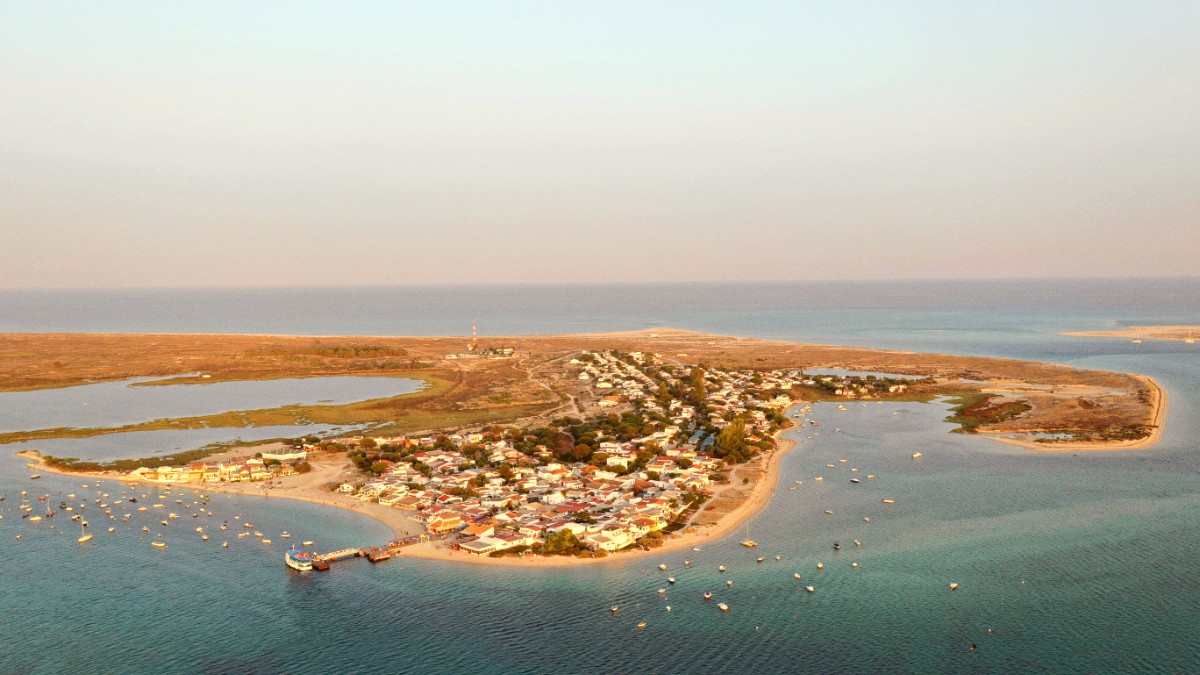
Portugal
Olhão's history is a story of resilience, maritime prowess, and a distinct identity forged over centuries. The town's origins root in a humble fishing settlement that grew organically from the 17th century. A defining moment came in 1808 during the Peninsular War, when the people of Olhão initiated an uprising against the French occupiers, earning the civic title of "Vila da Restauração" (Town of the Restoration).
Olhão is in the heart of the Ria Formosa Natural Park, a protected lagoon system stretching across 60 kilometers of the eastern Algarve coastline. This location defines Olhão's character, making it a gateway to a network of barrier islands, salt marshes, and channels.
The Ria Formosa is an intricate ecosystem, separated from the Atlantic Ocean by a chain of sandy barrier islands. This creates calm, shallow waters ideal for shellfish harvesting, birdwatching, and relaxed boat trips. The town's urban area is relatively flat, especially near the waterfront, making it comfortable for walking and cycling.
In the 19th and early 20th centuries, Olhão developed into a major fishing and canning center, notably known for tuna and sardine processing. This period of industrial growth saw the construction of its iconic red-brick market buildings, which remain the pulsating heart of the town today.
The unique cubist architecture of the old town, with its flat-roofed, white-washed houses, speaks to influences from North Africa. This style, practical for drying fish on rooftops and creating cool interiors, distinguishes Olhão from other Algarve towns.
Origins as a humble fishing settlement
Rebellion against French occupation
Fishermen sail to Brazil to announce restoration
Major fishing & canning industry growth
Preservation of historical character
Its central appeal lies in its dynamic fish and produce markets, housed in two distinctive red-brick buildings along the waterfront. These markets are a daily spectacle of color, sound, and fresh produce, from the day’s catch to regional fruits and vegetables, local cheeses, and olives.
Olhão serves as the main departure point for ferries and boat tours to the Ria Formosa's stunning barrier islands: Ilha da Armona, Ilha da Culatra, and Ilha do Farol. These islands provide expansive, pristine beaches, unique island communities, and a peaceful escape from urban life.
Olhão’s culinary scene is a paradise for seafood lovers. Restaurants along the waterfront and in the old town serve dishes prepared with the freshest ingredients sourced directly from the local market. Expect everything from simple grilled sardines to elaborate seafood stews cooked in a traditional cataplana pot.
For visitors, Olhão is a blend of cultural immersion, natural beauty, and gastronomic pleasure. It serves as a base for exploring the eastern Algarve, with easy access to nearby towns like Faro and Tavira. This destination appeals to travelers seeking an authentic experience, who appreciate good food, natural landscapes, and a slower pace of discovery. It is a testament to the enduring spirit of Portugal's fishing communities.
Olhão offers a variety of experiences depending on the time of year.
Shoulder seasons (April-May, Sep-Oct) for pleasant weather and fewer crowds.
Faro Airport (FAO) is the closest international gateway.
Euro (€, EUR) is the official currency.
Portugal is part of the Schengen Area. No specific vaccinations are required for entry.